Excerpts from Jim Conrad's
Naturalist Newsletter
from the March 9, 2014 Newsletter issued from the Frio Canyon Nature Education Center in the valley of the Dry Frio River in northern Uvalde County, southwestern Texas, on the southern border of the Edwards Plateau; elevation ~1750m (~5750 ft); N29.62°, W99.86°; USA
MEXICAN ASH FLOWERING
In Uvalde spring has advanced exactly to the point at which the Eastern Redbuds are at their peak of flowering. Less spectacular but just as springy looking are freshly minted, glossy, yellow-green leaves of Mexican Ashes, FRAXINUS BERLANDIERIANA, growing along the banks of the little Leona River passing through Memorial Park, as shown below:
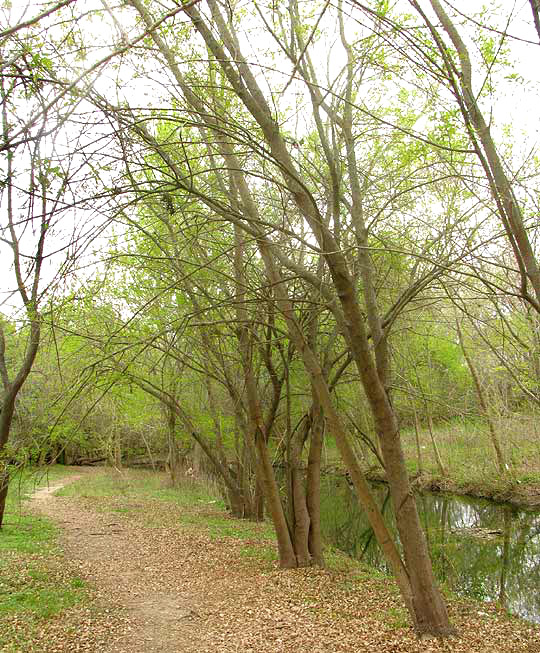
On mature trees, flowers emerge along with the leaves. A branch showing not only expanding compound leaves with three or five leaflets, but also brown, possibly frost-bitten clusters of pollen-producing anthers of male flowers, is shown below:
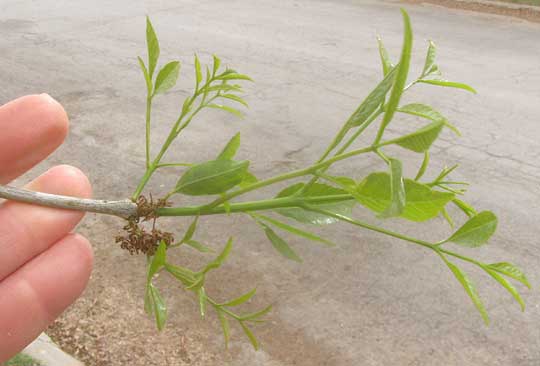
More robust inflorescences of female flowers with their fuzzy, brown stigmas are seen below:
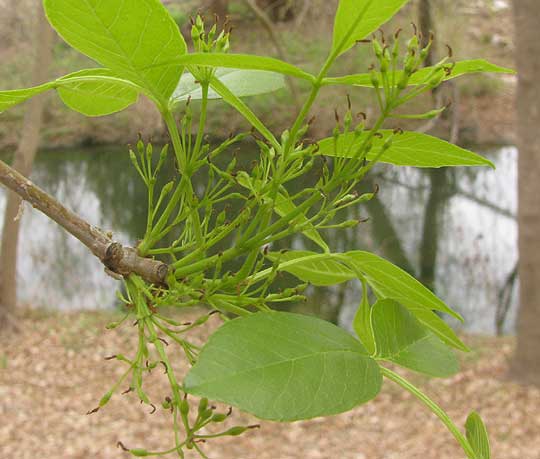
A close-up of individual female flowers appears below:
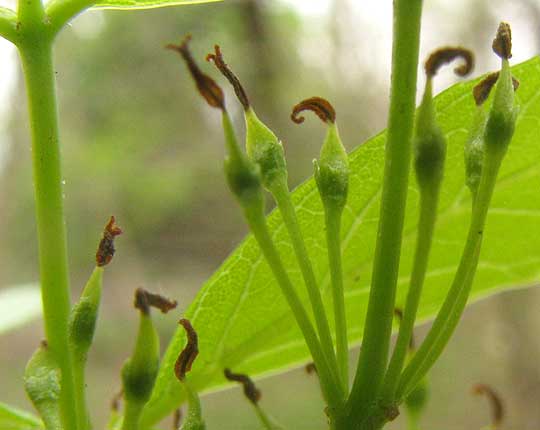
A tree's gray, narrowly ridged bark, fairly typical of ashes, can be seen below:
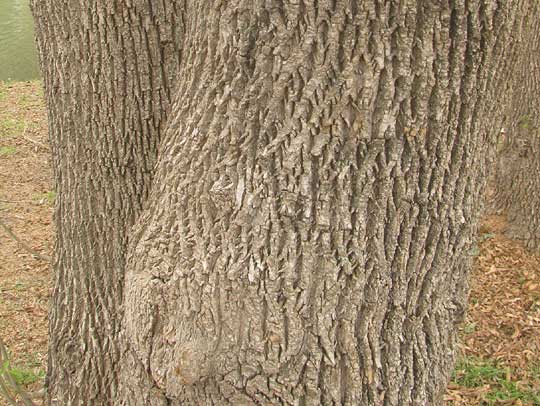
In the US, Mexican Ashes occur mainly in southern Texas, in alluvial soil of stream floodplains, though it's reported spottily in Louisiana and Mississippi. The species is common in similar environments in northeastern Mexico, and Charles Sprague Sargent in his classic The Silva of North America reports it as much planted throughout Mexico, where when cared for it can reach 75 feet in height (23m), though in the US it rarely exceeds 30 feet (9m). He further states that:
For centuries it has been planted in the cities of the Mexican table-land... and their parks and plazas are often dignified by single individuals or noble avenues of this species, which no other Ash-tree surpasses in stateliness and beauty.
In contrast, the Texas Forest and Agriculture Extension Service deems the Mexican Ash a weed tree because of its short life span, susceptibility to pests and disease, and habit of constantly dropping small, dead branches.
Mexican Ash leaves are eaten by caterpillars of the various swallowtail, sulphur and orange butterflies and their substantial fruit clusters feed certain grain-eating birds. Along stream banks where they normally are found their extensive networks of roots retard bank erosion. It leafs out earlier and holds is leaves longer than many ashes, which conveys other esthetic and wildlife values as well.
from the April 1 9, 2014 Newsletter issued from the Frio Canyon Nature Education Center in the valley of the Dry Frio River in northern Uvalde County, southwestern Texas, on the southern border of the Edwards Plateau; elevation ~1750m (~5750 ft); N29.62°, W99.86°; USA
MEXICAN ASH FRUITING
Now that leaves on Mexican Ashes are fully expanded, some branches are heavily laden with ash fruits, as shown below:
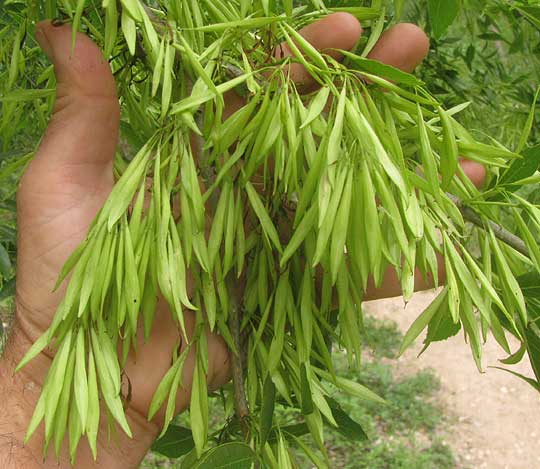
Ash fruits are achene-type "samaras," which are one-seeded, winged fruits that don't split open at maturity.